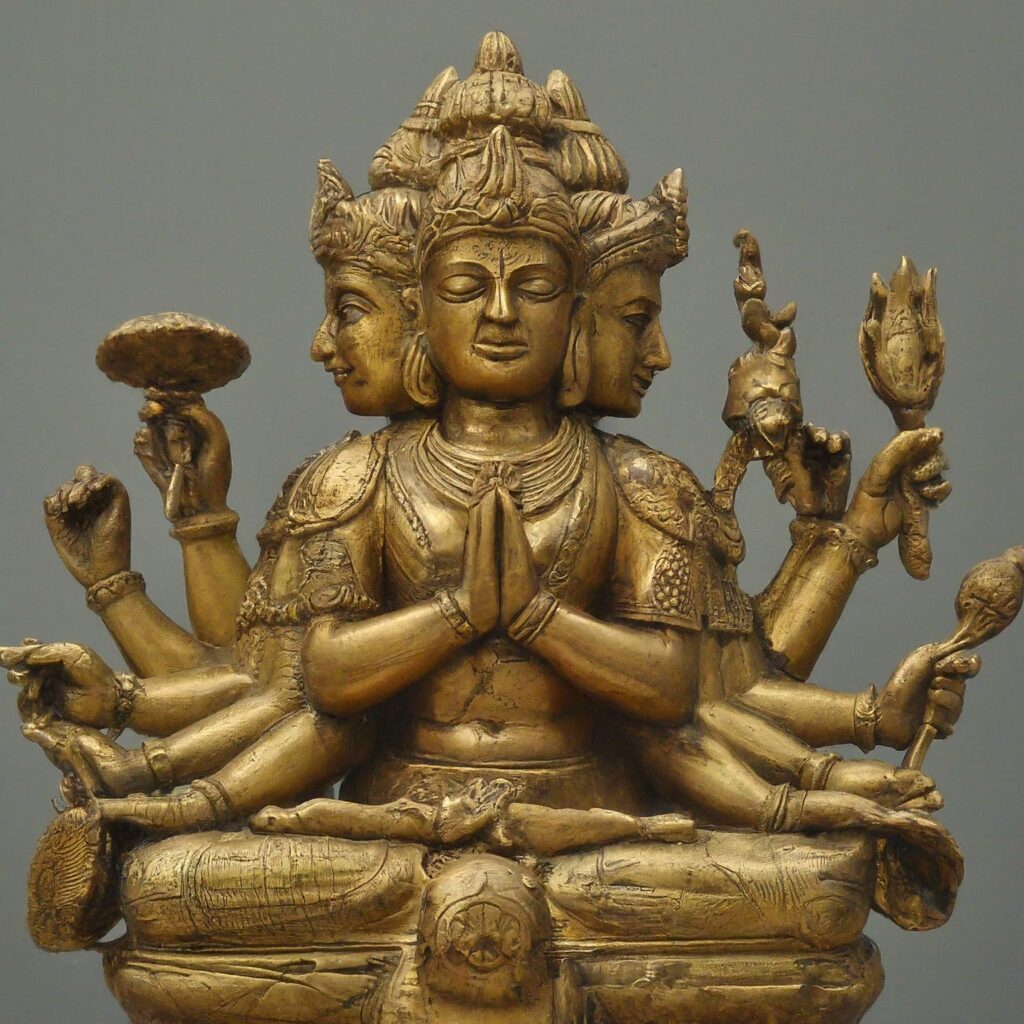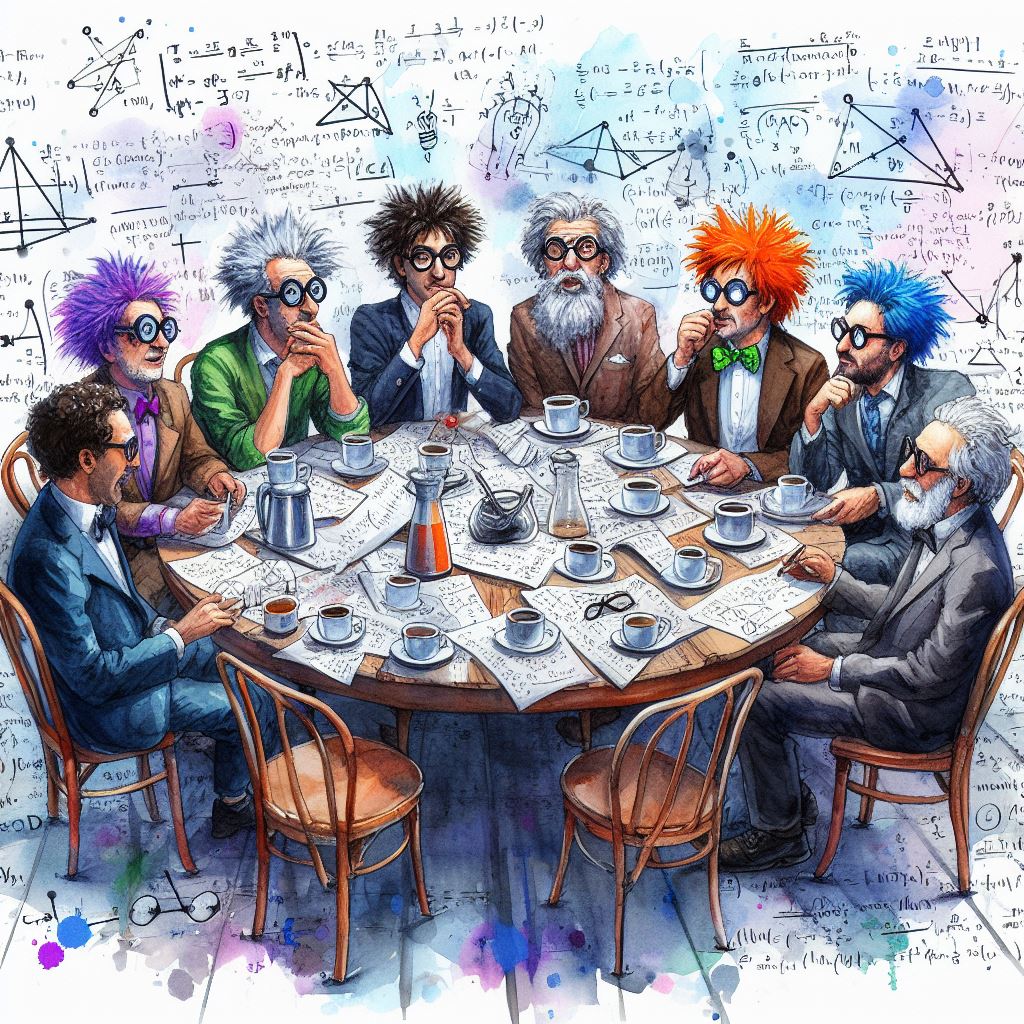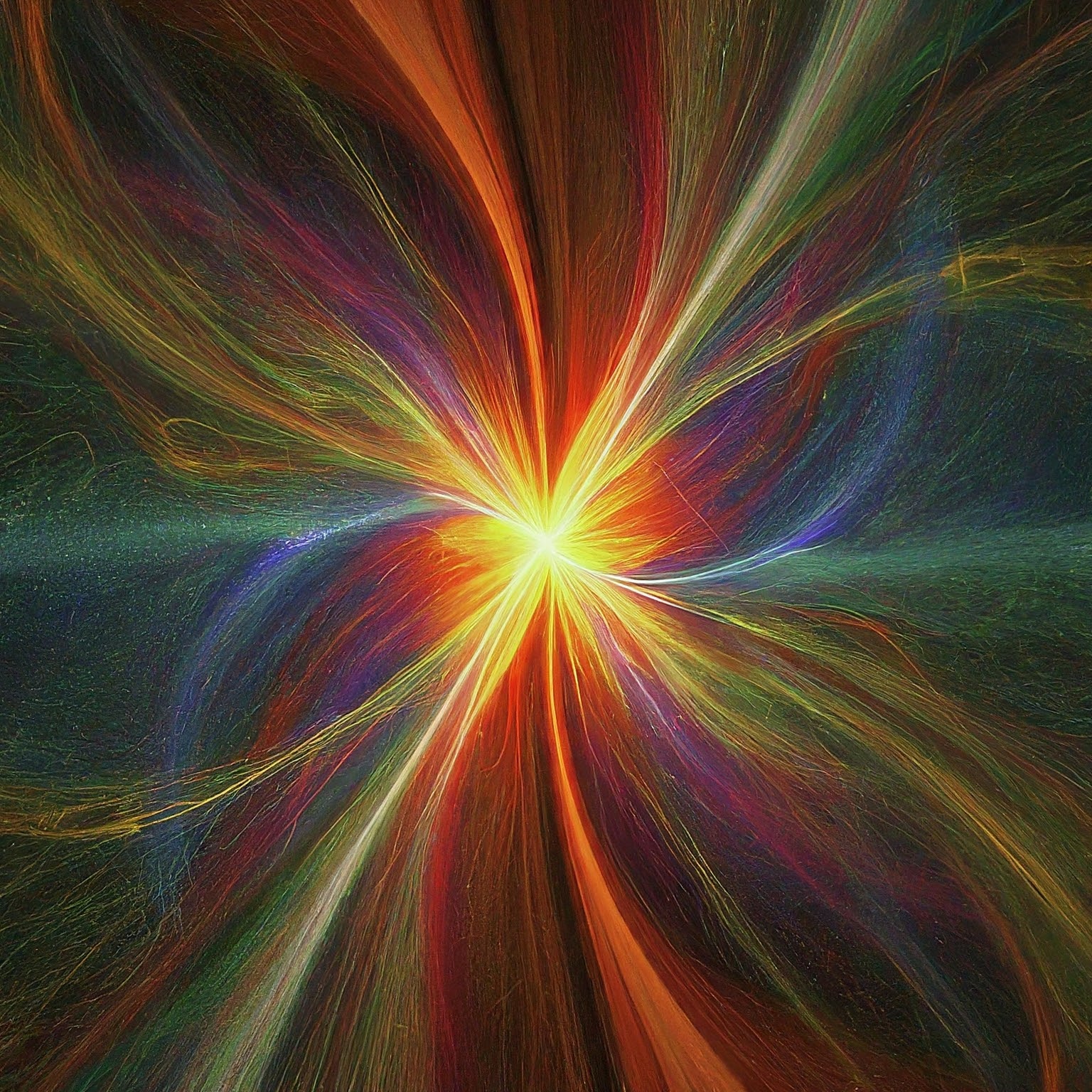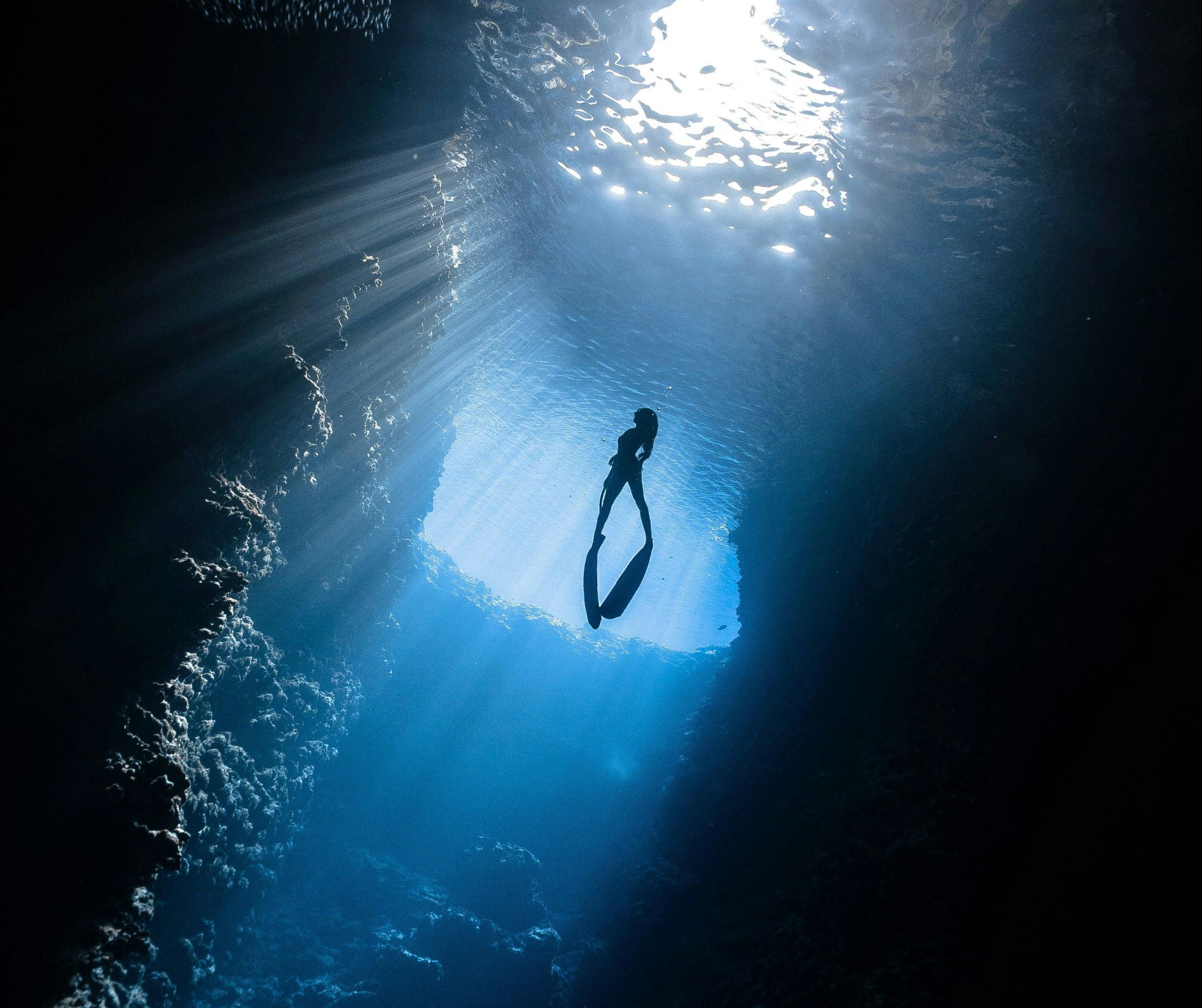People often talk about the supposed conflict between science and religion (particularly Christianity). Evolution is one of the most well-known arenas of this conflict that comes to mind for people. But if there’s one person whose work and theological ideas contradict the belief that science and religion cannot coexist, it’s Pierre Teilhard de Chardin. This 20th century polymath was a Jesuit priest, scientist, paleontologist, theologian, and philosopher. He totally subscribed to Darwin’s theory of natural selection and even made groundbreaking discoveries that supported this view of evolution. For him, his faith in God was not threatened by his scientific knowledge, but rather informed by it—and vice versa. He saw God and evolution as two ways of describing the ongoing force of creation, which is defined by a fundamental interconnectedness of all things in the natural universe.
For the modern-day mystic, Teilhard de Chardin is very important. So, we’ll be focusing an entire blog post on him. In this post, you will learn:
- A bit about who Teilhard was, along with some of the most important moments and influences in his life.
- How Teilhard navigated his dual identity as a scientist and theologian.
- What Teilhard meant by the concept of the “Cosmic Christ” and how this fits into his spiritual understanding on evolution.
- How prescient Teilhard was in foreseeing many of our modern-day interests and concerns.
- What Teilhard’s vision was for the future of humanity and how you fit into that!
The Interconnectedness Of Science And Religion
“Someday, after mastering the winds, the waves, the tides and gravity, we shall harness for God the energies of love, and then, for a second time in the history of the world, humanity will have discovered fire.”
Pierre Teilhard de Chardin
This beautiful quote by Pierre Teilhard de Chardin encapsulates much of what this post will be about. Every mystic has a treasure to offer us, but Teilhard is particularly relevant for us today. He’s a scientist, but clearly not a materialist. The world is both spiritual and material. Teilhard’s philosophies are all about how these two natures interconnect into a complex network. And he saw this network as wrapping itself around the globe like a membrane around a single organism. In this, he was way ahead of his time.
This quote also conveys another insight that is more relevant today than ever. Compared to the great scientific strides we have made as a species, we have a long way to go toward fully realizing the Divine Love that runs through us all and acting upon that realization in our social interactions with one another on this planet. And that’s why the wisdom of mystics is so important for us today. Mysticism helps us bridge that gap between thought and action when it comes to Love.
The Jesuit Order’s Relationship With Science
Before diving into Teilhard’s scientific career, it is helpful to first understand how Jesuits engage with science. Since its founding in 1540 by St. Ignatius, the Jesuit Order has been a great champion of the natural sciences. For centuries, Jesuits have enthusiastically positioned themselves at the forefront of scientific research and discovery.
This trend continues today in the lives of individuals like Jesuit Brother Guy Consolmagno, a Vatican astronomer. He asserts that “research is a form of prayer” and that, “The spirituality of the Jesuits is all about our place in creation: why we are created, why the world was created, how we relate to creation.”
Teilhard would enthusiastically co-sign that statement. Understanding the natural world through scientific methods is how the Jesuits get closer to God. In doing so, they develop a richer understanding of God’s creation and our own role in that creative process.
Science And Religion In Teilhard de Chardin’s Youth
Born in rural Orcines, France in 1881, Pierre Teilhard de Chardin was practically a scientist straight out of the womb. In his autobiography, The Heart of Matter, he remarks, “The forests molded me. They gave me my first taste of the joys of discovery. To Auvergne I owe my most precious possessions, a collection of pebbles and rocks that can still be found there, where I lived.” He spent days at the foot of ancient volcanoes collecting stones like citrine and amethyst. He cataloged and analyzed them, but he also loved just letting himself become absorbed in the wonder of their beauty.

Teilhard’s father encouraged his love of science, while his mother nurtured his passion for spirituality. So, his upbringing was marked by an enthusiastic marriage of science and religion—a union that he would embody for the rest of his life.
With an early aptitude and love for both science and religion, he was a natural fit to enter a Jesuit seminary after high school. It was the perfect environment for him. He would continue cultivating a life of prayer while also elevating himself as a burgeoning earth scientist.
Teilhard de Chardin’s Scientific Discoveries
Early in his career as a scientist, Teilhard became known for his attention to detail. He discovered three new species of shark that had previously been lumped in with their common ancestor. For that reason, this branch of shark is now named Teilhardia. Teilhard recognized the significance of these discoveries and the natural talents they reflected. And so, he narrowed his studies from naturalism to paleontology, the study of fossils and ancient life.
By the 1920s, Teilhard had already made a splash in the scientific and theological communities for his discoveries and charismatic personality. He was becoming a rising star on both fronts. And while the Jesuits had wholeheartedly supported Teilhard’s work up until this point, the Vatican was growing worried by his particularly bold synthesis of scientific and religious ideas. So, they forbade Teilhard from speaking publicly about spiritual matters and sent him to China. The idea was to get him out of the spotlight by sending him far away on a paleontology assignment.
Ironically, that fateful decision only fueled Teilhard’s stardom, since his team in China ended up discovering the “Peking Man,” a group of hominin remains, some of the earliest bones ever uncovered. It still stands as one of the most critical discoveries in piecing together the evolutionary story of our own species.
It was also on this trip that Teilhard had an important mystical experience of union with God. These two influential events catalyzed a new theological vision of evolution.
A Theological Vision Of Evolution
For Teilhard, every scientific breakthrough and discovery was the trigger for a corresponding theological insight. The Peking Man discovery was one of the greatest paleontological finds of the century. And it had great implications for the modern understanding of evolutionary theory. His hands had been dirtied with the scientific subject of biological evolution and he was compelled to dive head-first into the deep end of its spiritual implications. He just couldn’t help himself. He had to figure out the full theological significance of this cutting-edge scientific topic.
The Interconnectedness Of Spirit And Matter
One book that had a particularly big impact on Teilhard during his younger years as a student was Creative Evolution by his fellow countryman Henri Bergson, one of the most influential French philosophers of the 20th century.
1905 is when Albert Einstein published the first of his major works on the theory of relativity. He had made a convincing case for the interdependence of space and time: hence, the concept of “space-time” as a single construct. In Bergson’s Creative Evolution, published just two years later in 1907, the philosopher made a similar move. In his case, he challenged the dualistic Aristotelian view of matter and spirit as separate, which had dominated philosophy and theology all throughout the history of Western civilization. For Bergson, there is neither just spirit nor just matter in the world. It’s both.
And so, reminiscent of Einstein’s “space-time,” Teilhard views the universe as composed of “spirit-matter,” drawing on Bergson’s ideas of the interconnectedness of these two components.
The Cosmic Christ
Central to the theological ideas of evolution that Teilhard would formulate is his concept of the “Cosmic Christ.”
Following in Bergson’s footsteps, and fueled by his own experiences with the Peking Man discovery, Teilhard comes to view evolution as a continually expanding realm of possibility that constantly increases in complexity. For Teilhard, Christ is the creative action behind this—the impulse that perpetuates evolution. And Christ is “Cosmic” because this force of creation runs through the entire universe across space and time. As Teilhard writes,
“God didn’t originate in Jesus. God has been working as The Christ through all faiths, all beings, for all time since the beginning of the universe. To put it concretely, the moment that God chose to materialize in the Big Bang is the birth of Christ. This material manifestation, nature, matter, everything we see around us has been revealing the Divine ever since that moment, circa 14.5 billion years.”
Pierre Teilhard de Chardin

So, God isn’t a conscious being outside of the world, magically snapping its fingers and making a giraffe appear. Rather, God is the moving current of life that weaves itself through and propels everything to evolve from the inside. God is embedded within all things in the form of the Cosmic Christ. And all things are co-evolving in an interconnected way because they’re responding to one another on a continual basis. That includes us. We are part of this dynamic.
Salvation Reinterpreted
These ideas caused Teilhard to reinterpret salvation as something that goes way beyond just a simple doctrine of moral judgment confined to a single religion. Instead, salvation is freedom. It’s the freedom that happens when Reality becomes conscious of Its unity and interconnectedness with all things.
For us, salvation is when you know in your bones that you wholly belong to this world and that everything you do affects others. For St. Francis of Assisi, everything was a sibling: Brother Sun, Sister Moon. Whenever we’re moving toward connection, understanding, unity, patience, then we become part of the Mystical Body of Christ. The Cosmic Christ. And our awakening consciousness is how Christ becomes conscious of Itself.
This prayer, attributed to Teresa of Avila, gets at the same idea:
“Christ has no body but yours,
No hands, no feet on earth but yours,
Yours are the eyes with which He looks
Compassion on this world,
Yours are the feet with which He walks to do good,
Yours are the hands, with which He blesses all the world.
Yours are the hands, yours are the feet,
Yours are the eyes, you are His body.
Christ has no body now but yours.”
The Cosmic Christ And Interconnectedness In Other Religions
Remember Teilhard’s conviction that the Cosmic Christ is something that has been operating throughout all religions?
Well, have you ever seen those images of Hindu deities with four or more arms, or more than two eyes? Ever wonder what the heck that’s all about? Well, some say this just represents the deities’ power. But another interpretation is that the plurality of arms symbolizes that all arms are the arms of the deity. Your arms, my arms, Vishnu’s arms, Christ’s arms–they’re all arms of the same body. The world is basically one interdependent organism. This is quite different from the strictly materialistic perspective of evolution. Species are not just evolving independently from one another.

There is ample scriptural support for all of this as well. In the Bible, it is said that, “just as each of us has one body with many members, and these members do not all have the same function, so in Christ we, though many, form one body, and each member belongs to all the others.” (Romans 12:4-5) In a similar spirit, the Baha’i prophet Bahá’u’lláh told his followers, “Be ye as the fingers of one hand, the members of one body.” And the Daoist sage Chuang Tzu mused, “Heaven and Earth and I were born at the same time, and all life and I are one.”
Harnessing The Energies Of Love
Teilhard said that “Love is the bloodstream of evolution.” If we were to summarize Teilhard de Chardin’s spirituality in one succinct statement, it would be this: God is Love. And Love is the driving force behind evolution.
Love is the vehicle through which we understand God. Because God is Love. And for the world to truly flourish, we must grow in our capacity to harness the energies of love.
God Is Love
Before you jump to the conclusion that Teilhard’s emphasis on Love was the result of some carefree life spent mountaineering and frolicking through the woods with his head in the clouds, you should know one more thing about him. During World War I, Teilhard served in 67 battles over 4 years as a stretcher bearer in North Africa.
Teilhard is often accused of being too idealistic. But he witnessed more than his fair share of suffering. The beautiful thing is that his optimistic ideas were forged in the furnace of war. He had this incredible vision of God as Love and he was desperate to share it, knowing he could be killed in battle at any moment. So, he wrote feverishly between shifts in the trenches, enabling people like us to benefit from his spiritual wisdom.
He also wrote a series of letters from the front lines to his cousin Marguerite, collected in a book called The Making of a Mind. Teilhard had a surprising degree of enthusiasm for carrying a stretcher while others bore arms. Nursing wasn’t an admirable position for a man, but he preferred it because it gave him the opportunity to practice humility.
Over time, the tone of his letters shifts from enthusiasm to exhaustion. He writes about hard decisions he had to make to rescue his comrades. You can see just how heroic and altruistic he is. It’s easy to be good-natured and generous when everything is going well for you. It’s much more difficult to be loving when we’re under pressure. Teilhard is a man who sees Love everywhere, even in the midst of war.
Teilhard’s Prescient Ideas And Legacy
Teilhard’s work was never published during his lifetime. In large part, this was due to the Vatican’s distaste for his ideas. Gershom Scholem, a contemporary of Teilhard’s and one of the most important scholars of Jewish mysticism, sums up the life of a mystic in a way that certainly applies to Teilhard.
“To the mystic, the original act of Revelation to the community—the, as it were, public revelation of Mount Sinai, to take one instance—appears as something whose true meaning has yet to unfold itself; the secret revelation is to him the real and decisive one […] It is hardly surprising that, hard as the mystic may try to remain within the confines of his religion, he often consciously or unconsciously approaches, or even transgresses, its limits.”
Gershom Scholem, scholar of Jewish mysticism
But what seemed transgressive at the time has now come to be more celebrated. Teilhard is popular among folks who consider themselves “spiritual but not religious.” And many New Age forms of spirituality today bear the stamp of his influence.
Teilhard also was prescient in many ways. His writings are almost unbelievable because he foresaw the emergence of the internet and globalization. He left us with insights that offer a spiritual dimension to today’s ongoing debates about ecology and climate change, the role of AI in our society, and more.
Science Impregnated By Mysticism
One of Teilhard’s most prescient statements was this:
“Science alone can not discover Christ. But Christ satisfies the yearnings that are born in our hearts in the school of science. Science will, in all probability, be increasingly impregnated by mysticism.”
Pierre Teilhard de Chardin
Physicist and historian David Kaiser has a wonderfully insightful and entertaining book called How The Hippies Saved Physics. The book tells the story of a group of physicists in the 1970s who revived interest in the field of quantum mechanics.

And you know how they did it? By impregnating it with mysticism. Eastern mysticism, to be specific. They saw how the nondual theological traditions of Hinduism and Daoism echoed principles in quantum physics like wave-particle duality. They saw how more expansive understandings of consciousness as from these traditions, and others like Buddhism, matched up with quantum principles like nonlocality.
And with this new lens of mysticism, they were able to see the fuller implications of the principle of quantum entanglement—what Einstein famously referred to as “spooky action at a distance.” This was a phenomenon in which manipulating a particle would cause a corresponding effect in another particle with which it was not in direct physical contact. Reflecting on the profundity of this observation, physicist Fritjof Capra wrote, “The world view implied by modern physics is inconsistent with our present society, which does not reflect the harmonious interrelatedness we observe in nature.” And Paul Dirac, who received the Nobel Prize in Physics for essentially co-discovering quantum mechanics once quipped, “Pick a flower on earth and you move the farthest star.”
Interconnectedness Of Science And Mysticism
The Fundamental Fysiks Group was impregnating science with mysticism just a couple of decades after Teilhard’s death. But fast-forward to today, and you see the same kind of blending of science and mysticism all over the place. Many New Age forms of spirituality point to quantum mechanics to support their beliefs about things like cosmic consciousness, the law of attraction, and so on.
Beyond this, many prominent scientists and leaders embrace a kind of agnostic or atheistic spirituality centered around the beauty and interconnectedness of the natural world. Neil deGrasse Tyson says, “When I look up in the universe, I know I’m small, but I’m also big. I’m big because I’m connected to the universe and the universe is connected to me.” And Lise Kingo, the CEO of the United Nations Global Compact had this to say in response to the Covid-19 pandemic: “We are interconnected with an interdependent on each other in ways we did not fully understand before.”
Currently, as a species, we don’t honor our interconnectedness. We exploit our environment rather than recognize its intrinsic Divinity. The next chapter in our evolution is about awakening to and connecting with the consciousness that runs throughout the universe.
Mystical Awakening
In the end, spirituality is a journey of awakening to Love so we can be kinder versions of ourselves. Every act of human kindness helps God achieve Its purpose. Love lies at the core of every religion, but it also transcends religion. The explosive force that created the universe is the same Divine Love that continuously keeps every atom of creation existing and moving forward on its grand evolutionary journey back to God.
In the past we may have thought of mysticism as randomly occurring events that only happen to special people in special circumstances. But from Teilhard’s point of view, our whole species is evolving towards a united consciousness. Beingness, by Its nature, is always moving toward becoming conscious, and our awakening—yours and mine—is a facet of God waking up, evolving, becoming aware. Teilhard called the final outcome of this process the Omega Point. It would be a fully realized community of flourishing sentient beings. And he was ultimately hopeful, optimistic, and enthusiastic that we would get there.
And we will. It’s already happening. And you are part of it! You are helping us as a species progress toward a deeper respect for our interdependence and interconnectedness. And the Divine Beingness in you is becoming more conscious of itself.
Paragraph
Paragraph


